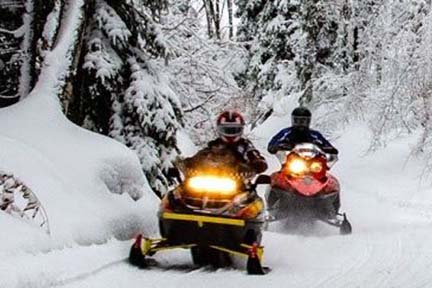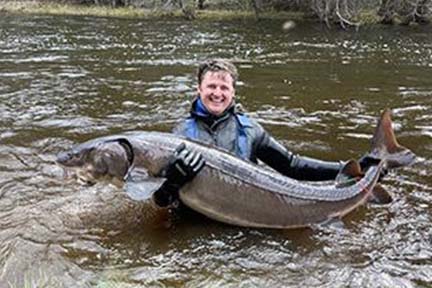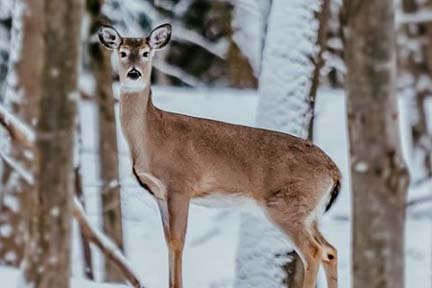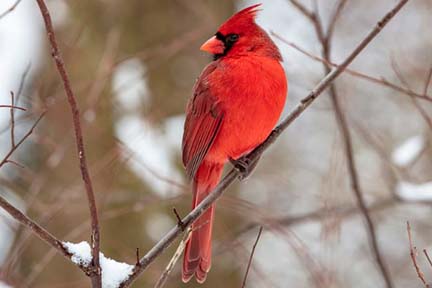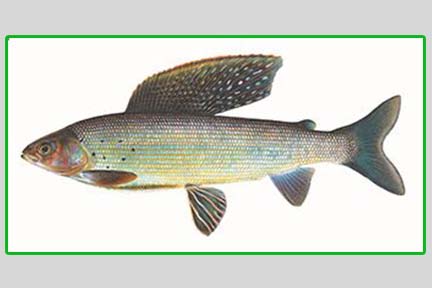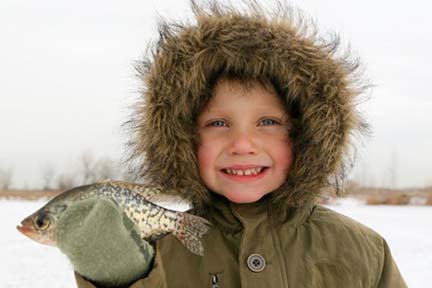| Here are a few of this week’s stories from the Michigan Department of Natural Resources:
See other news releases, Showcasing the DNR stories, photos and other resources at Michigan.gov/DNRPressRoom.
PHOTOS: Larger, higher-res versions of some of the images used in this email (bear, snowy owl, black-necked stilt, lantern-lit trail) are available in the DNR’s public image gallery. Other photos include Tawas Point and invasive species expo.
 The next meeting of the Michigan Natural Resources Commission – Thursday, Feb. 13, in Lansing – includes an overview of fiscal year 2026 operational budgets for the DNR Fisheries and Wildlife divisions, a summary and schedule of wildlife regulations, a look at bear population trends and regulations, a DNR legislative report, and an update on Wildlife Conservation Order Amendment No. 1 of 2025, which proposes to keep the recently acquired Gete Mino Mshkiigan property in Cheboygan County open to hunting following the integration into the North Central State Trail as state park property. The next meeting of the Michigan Natural Resources Commission – Thursday, Feb. 13, in Lansing – includes an overview of fiscal year 2026 operational budgets for the DNR Fisheries and Wildlife divisions, a summary and schedule of wildlife regulations, a look at bear population trends and regulations, a DNR legislative report, and an update on Wildlife Conservation Order Amendment No. 1 of 2025, which proposes to keep the recently acquired Gete Mino Mshkiigan property in Cheboygan County open to hunting following the integration into the North Central State Trail as state park property.
The day starts at 9:30 a.m. in the Michigan Room, first floor of Lansing Community College’s Downtown Campus, 600 N. Grand Ave. in Lansing. (Parking is available on first floor in the ramp.) See the draft meeting agenda and remaining 2025 meeting dates at Michigan.gov/NRC.
For more information or to request time to speak at the meeting, email NRC@Michigan.gov. |
 Each winter, Michigan welcomes the large, magnificent snowy owl from the Arctic tundra – and its appearance can attract a lot of attention! Each winter, Michigan welcomes the large, magnificent snowy owl from the Arctic tundra – and its appearance can attract a lot of attention!
This season, these elusive visitors have been seen across the state. While exciting for us, these visits to Michigan can pose unfamiliar threats to the owls. Unfamiliar urban landscapes put them at risk from curious humans, rodent poisoning, and vehicle and power line collisions.
Here are a few quick tips for viewing these majestic visitors, while helping to keep them stress-free and safe:
- Give them space. When snowy owls visit Michigan in winter, they don’t often display signs of fear toward humans. A good rule of thumb is to view the owls from a great distance, using binoculars or a scope, rather than approach them.
- Don’t lure owls with audio recordings. While it might be tempting to use audio recordings to attract snowy owls closer to you, hearing another owl’s call – even a recorded one – can be stressful to them.
- Don’t lure owls with live bait. This practice can be dangerous for owls when it’s done by photographers and birders looking to get a glimpse. Owls learn to associate people with food and can be drawn to dangerous places, like roads or airports, where people can be found.
- Submit your eBird observations to scientists but keep them hidden from the public. Here’s a step-by-step guide on how to keep your eBird checklist hidden and why discretion is sometimes needed to protect certain birds, like owls.
|
By keeping these tips in mind, you can help snowy owls on their wintering grounds here in Michigan. Seeing a snowy owl is an unforgettable sight; plan your owling trip for February, as they will begin their journey back to the Arctic the following month.
Read the full article, brought to you by MI Birds, an outreach and education program of the DNR and Audubon Great Lakes.
Questions? Contact Erin Ford at 313-820-0809.
 Have you ever wondered what it’s like to be a lighthouse keeper? Have you ever wondered what it’s like to be a lighthouse keeper?
If that sounds like your dream adventure, grab three friends and apply to the 2025 Lighthouse Keeper Program at Tawas Point Lighthouse located in Tawas Point State Park. Opportunities are available from early June through late October.
For just $250 per person, keepers will live along the Lake Huron shoreline in a historic lighthouse keeper’s dwelling for two weeks. The living space features modern accommodations, including two bedrooms that can sleep four adults, a fully equipped kitchen and bathroom with a shower. Learn about the recent restoration of the Tawas Light in this Showcasing the DNR story.
During their stay, lighthouse keepers help greet visitors, lead tours, provide information about the historic structure and perform basic facility maintenance. The keeper schedule is designed to allow time to enjoy recreational activities, soak up the stunning surroundings and explore the region, all while providing valuable volunteer services. The total per-person service commitment is about 60 hours over the two weeks.
“Volunteering at the Tawas Point Lighthouse is a unique experience that combines the region’s cultural history and natural sciences,” said Don La Barre, Tawas Point Lighthouse site historian. “You’ll dive into the lighthouse’s fascinating history, which dates back to the 1870s. Join us as a volunteer lighthouse keeper in the 2025 season and make your mark on this historic landmark!”
Keepers apply in teams of four. Team members must be at least 18 years old and able to climb the 85 steps to the top of the tower.
There is a $40 nonrefundable application fee. Applications are due by Friday, Feb. 28, and successful applicants will be notified no later than March 14.
For more information and application details, visit the Michigan History Center’s Lighthouse Keepers webpage or email DNR-TawasKeepers@Michigan.gov. |
 Whether from the comfort of home or while out exploring our favorite public lands, Michigan’s birds connect us to the beauty of our natural world. Join MI Birds, an outreach program of Audubon Great Lakes and the DNR, for a free lunch-hour webinar series dedicated to Michigan’s incredible birds. Whether from the comfort of home or while out exploring our favorite public lands, Michigan’s birds connect us to the beauty of our natural world. Join MI Birds, an outreach program of Audubon Great Lakes and the DNR, for a free lunch-hour webinar series dedicated to Michigan’s incredible birds.
With the 2025 MI Birds webinar series, you can learn about where to spot birds, the public lands and other habitats they depend on, and the ongoing efforts to conserve them. When you RSVP to save your spot for each webinar, you’ll get a reminder email leading up to each event. |
- Demystifying Pointe Mouillee State Game Area, Friday, March 21 (noon to 1 p.m. ET)
Pointe Mouillee State Game Area is one of southeast Michigan’s premier birding destinations! From black-bellied plovers to glossy ibises, discover the unique birds that inhabit this Wetland Wonder and Audubon Important Bird Area, conservation efforts to support them, and tips to enhance your visit. RSVP for March 21 webinar.
- Demystifying Portage Marsh State Wildlife Area, Friday, May 9 (noon to 1 p.m. ET)
On the shores of Lake Michigan, Portage Marsh is an important coastal wetland that provides a protected area for waterfowl and wetland species. Hundreds of bird species fly through Portage Marsh State Wildlife Area, near Escanaba, each spring. Get to know this Audubon Important Bird Area and Wetland Wonder, the birds you might see, recreation opportunities (including a hiking trail that runs along the peninsula) and the ongoing work to protect this vibrant ecosystem. RSVP for May 9 webinar.
- Demystifying Paw Paw River State Game Area and the West Michigan Coastal Corridor, Thursday, July 17 (noon to 1 p.m. ET)
Learn about the new Paw Paw River State Game Area, an exciting addition to southwest Michigan! Discover the critical habitat this area provides for migrating songbirds, as well as habitat management efforts and other birding hot spots along the West Michigan Coastal Corridor. RSVP for July 17 webinar.
Questions? Contact Erin Ford at 313-820-0809.
Our February calendar is jam-packed with opportunities to get out and enjoy Michigan’s natural and cultural resources – here are a few highlights. For a full list of DNR events, see Michigan.gov/DNRCalendar.
Snowshoe hikes: Fresh air, fitness, fab views
 Several state parks will host snowshoe or cross-country ski events – some by lantern or candlelight – this month, including: Several state parks will host snowshoe or cross-country ski events – some by lantern or candlelight – this month, including:
- Lantern-lit snowshoeing, presented by Van Riper State Park on the grounds of the Michigan Iron Industry Museum in Negaunee Feb. 7.
- At Tahquamenon Falls State Park in Paradise, both guided snowshoe hikes and lantern-it snowshoe events Feb. 8, Feb. 15 and Feb. 22.
- A lantern-lit guided snowshoe hike at Porcupine Mountains Wilderness State Park in Ontonagon Feb. 8.
- A lantern-lit hike at Orchard Beach State Park in Manistee Feb. 14.
- Candlelight cross-country skiing at Metamora-Hadley Recreation Area in Metamora Feb. 15.
In addition to a lantern-lit trail, the Porkies Winter Snowburst Carnival at Porcupine Mountains Wilderness State Park in Ontonagon, Feb. 22, will feature a youth treasure hunt, a chance to learn how to ski, cardboard sled races, fireworks and more.
Find more details about these and other cold-weather events at Michigan.gov/WinterFun. |
Outdoor Skills Academy: Bird watching, ice fishing
If you’re interested in learning more about bird watching or ice fishing, the DNR Outdoor Skills Academy can help!
Birding Basics, Feb. 15 at the Wolf Lake Fish Hatchery Visitor Center in Mattawan, will teach new birders about identification techniques, behavioral clues, foraging styles and habitat types. The class also will introduce participants to birding tools such as binoculars and to free birding resources and apps, explore ways they can get involved in community science projects, and cover birding etiquette and ethics. Cost is $25. Each participant will receive a bird field guide and be entered into a drawing for a grand prize.
Advanced Hard Water School, Feb. 15-16 at the Carl T. Johnson Hunting and Fishing Center in Cadillac’s Mitchell State Park, will cover advanced techniques for catching panfish, walleye and northern pike through the ice. Instructors will spend the first day indoors, focused on which lures and rigs are best for varying conditions, how to effectively use sonar and camera electronics, and tip-up styles and rigging techniques. Day 2 features fishing on the ice. Cost is $50, which includes lunch Saturday.
All-ages events at the OAC
 If you live in or are visiting the Detroit area, check out the Outdoor Adventure Center activity schedule for fun and educational programs for all ages (kids to seniors), both indoors and outdoors. The February calendar includes archery, yoga, birding, ice fishing and much more. Don’t miss Girls Night Out: Galentine’s Archery Games Feb. 14, the Birding Expo Feb. 16 and the Invasive Species Awareness Expo Feb. 23. If you live in or are visiting the Detroit area, check out the Outdoor Adventure Center activity schedule for fun and educational programs for all ages (kids to seniors), both indoors and outdoors. The February calendar includes archery, yoga, birding, ice fishing and much more. Don’t miss Girls Night Out: Galentine’s Archery Games Feb. 14, the Birding Expo Feb. 16 and the Invasive Species Awareness Expo Feb. 23.
Free Fishing Weekend Feb. 15-16
Two days twice a year, you can enjoy one of Michigan’s premier outdoor activities, fishing, for free! The winter Free Fishing Weekend is Feb. 15-16 – all fishing license fees will be waived for those two days, and a Recreation Passport will not be required for entry into state parks and boating access sites. Remember that all fishing regulations will still apply, and be sure to review ice safety tips before heading out.
 See more pictures by Michigan state parks photo ambassadors at Instagram.com/MiStateParks. For more on the program, call Stephanie Yancer at 989-274-6182. (This photo is by Aubry Healy, for the Michigan DNR, at Ludington State Park.) See more pictures by Michigan state parks photo ambassadors at Instagram.com/MiStateParks. For more on the program, call Stephanie Yancer at 989-274-6182. (This photo is by Aubry Healy, for the Michigan DNR, at Ludington State Park.)
|
